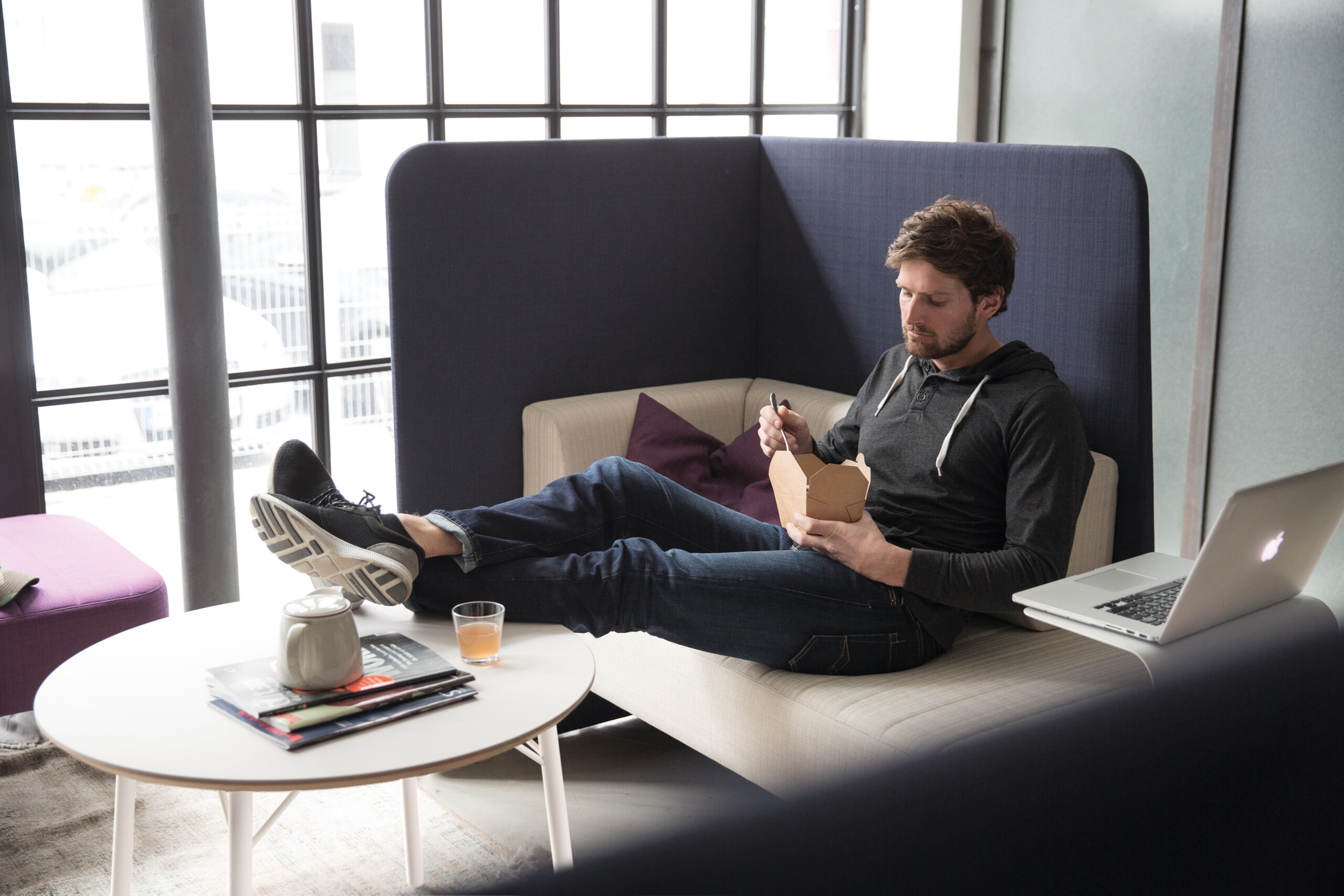About time! Break management in everyday working life.
By Helena Pumberger, 19.10.2022

A quick glance at the watch: five minutes to the lunch break. The stack of urgent work to be done has reached a dizzying height. The next meeting is already at one o’ clock. Just wolf down a bit of the sandwich you’ve brought to work and get the most urgent to-dos done on the side.
In our increasingly performance-oriented society we are often liable to fall into the trap of thinking that fewer breaks simultaneously mean more efficiency. Scientists from the Draugiem Group from Latvia have proven the exact opposite. They examined test persons who work all day at the computer screen. Results show that employees who take several adequate breaks are on average able to perform the most work. Regeneration and time management are therefore an indispensable necessity for coping successfully with everyday working life. Basically, the following applies: If the day’s work lasts longer than six hours, a break of at least thirty minutes has to be taken – by law.
Regeneration and variety are the declared objectives during this break period. Sitting at the desk all day requires compensatory movement – best of all in the fresh air. But the main focus should be on lunch. Remaining at the workplace and staring at the screen is taboo. The break is an excellent opportunity to chat and relax. Break areas or outdoor areas such as activity gardens are particularly effective in forgetting the desk for a while. Taking a break together with workmates enlivens the work atmosphere and contributes to positive collaboration. The main thing is to leave the work situation behind you if you really wish to wind down. And joining workmates at lunch whom you don’t have so much to do with during your everyday routine also promotes internal networking.
Objective and subjective time.
Nevertheless, taking a well-deserved break usually turns out to be quite difficult. According to Harvard Business Manager (01/22), this is because so-called objective time does not tally with subjective time. Objective time encompasses the general understanding of time such as calendar days or the time of day, while subjective time corresponds to each person’s very individual perception and rhythm. A practical example can illustrate the conundrum: lunch break is set for everyone at 12 noon on the dot (= objective time). For your own sense of rhythm and hunger sensation a break at 2 pm would suit your timing more (= subjective time). But since the break time is precisely specified, you might have your lunch under pressure while you’re still working on the side. The regeneration factor is non-existent and the time-out misses its actual objective.
Self-determined time management.
If we worked more according to our own sense of rhythm, we could avoid overload and improve our own time management. This means, in practical terms: whoever has the opportunity should time their breaks themselves. This independent time management supports one’s own personal work method. Relief when under pressure also promises the purposeful creation of freedoms. If the entire working day is strictly scheduled, little time is left for breathing spaces. In fact, these “unproductive” interims are an especial source of creativity and innovation. If you prioritise your tasks, you give yourself extra scope to address them. Having dealt with the most important of them, you can take a break with a good conscience. So it’s time – time to take the important breaks. No one needs to fear loss of efficiency and performance in doing so. Regeneration supports mental work and creativity and avoids the long-term mental and physical effects of stress.




